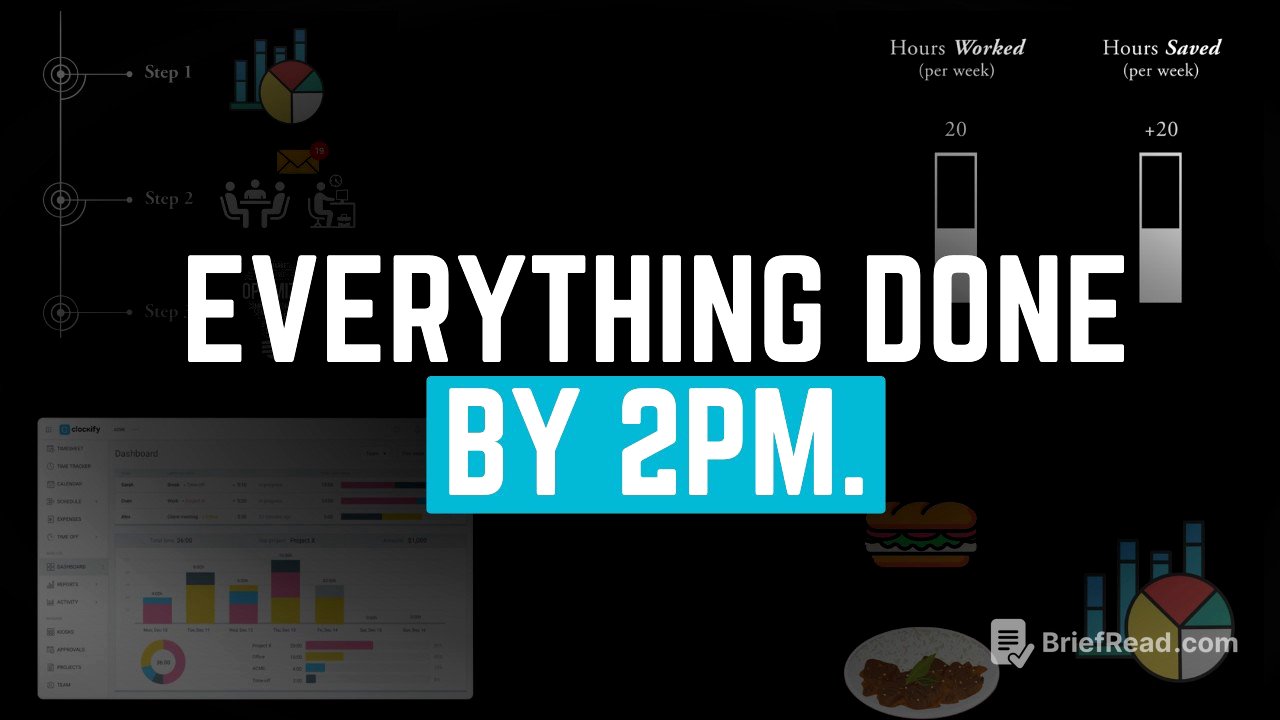TLDR;
This video presents a three-step approach to saving time in work and life, drawing parallels to calorie tracking for weight management. The core idea is that "what gets measured gets managed." By precisely tracking time, eliminating time wasters, and prioritizing high-leverage tasks, individuals can reclaim significant portions of their week.
- Step 1: Precisely track how you spend your time to identify time-wasting activities.
- Step 2: Ruthlessly eliminate or reduce obvious time wasters, such as unnecessary meetings or excessive email checking.
- Step 3: Prioritize high-leverage tasks that yield the greatest return on time investment, and delegate or automate lower-value activities.
Step 1 [0:21]
The first step involves precisely tracking how you spend your time to identify areas of inefficiency. The speaker recommends tracking activities in 15-minute increments for at least two weeks using a tool like Clockify. This process helps reveal surprising time sinks and allows you to see clear patterns in your daily routine. Even after just a day or two of tracking, you'll likely start noticing where you're wasting time and naturally begin to reclaim it, potentially saving 2-5 hours per week.
Step 2 [2:10]
The second step focuses on eliminating or reducing obvious time wasters once you've gathered enough data from time tracking. By reviewing your time tracking data, you can identify tasks and activities that consume significant time but don't contribute to your goals. The speaker suggests setting clear rules, such as checking emails only once or twice a day or limiting attendance to essential meetings with clear agendas. Removing these time wasters can free up 5-10 hours per week for more meaningful activities.
Step 3 [3:54]
The third step involves optimizing your time by prioritizing high-leverage tasks. After eliminating obvious time wasters, focus on activities that drive progress, require your unique skills, and create disproportionately positive results. Review your time tracking data to identify these high-leverage tasks and allocate more time and energy to them. Delegate, automate, or streamline lower-leverage tasks to free up even more time. This step can potentially save another 5-10 hours per week.









